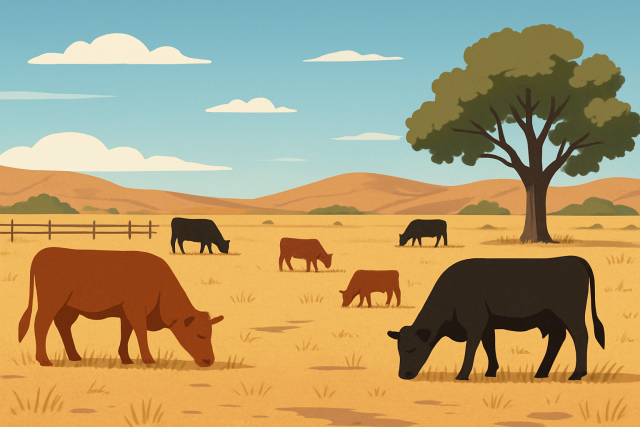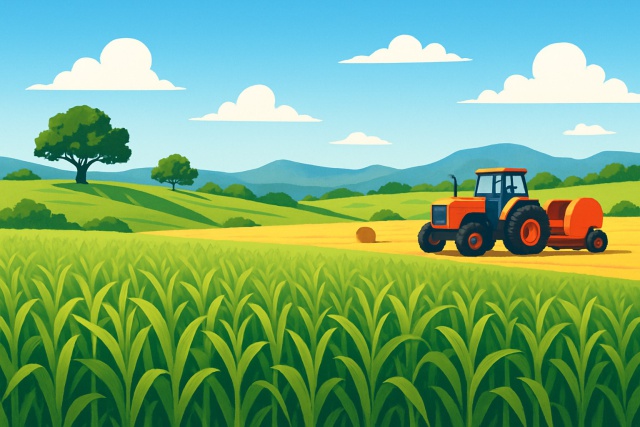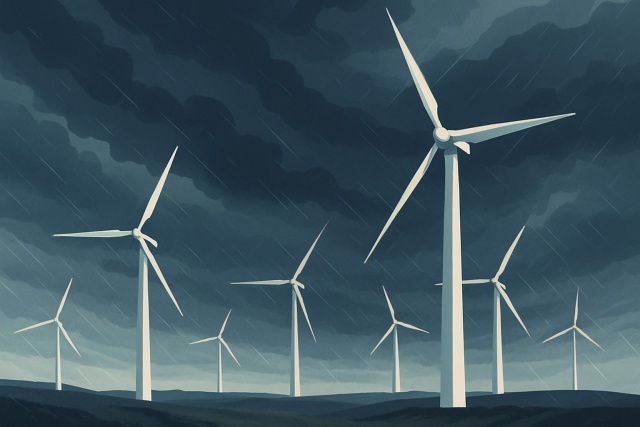March Rain and Spring Weather - What Science Shows Us?
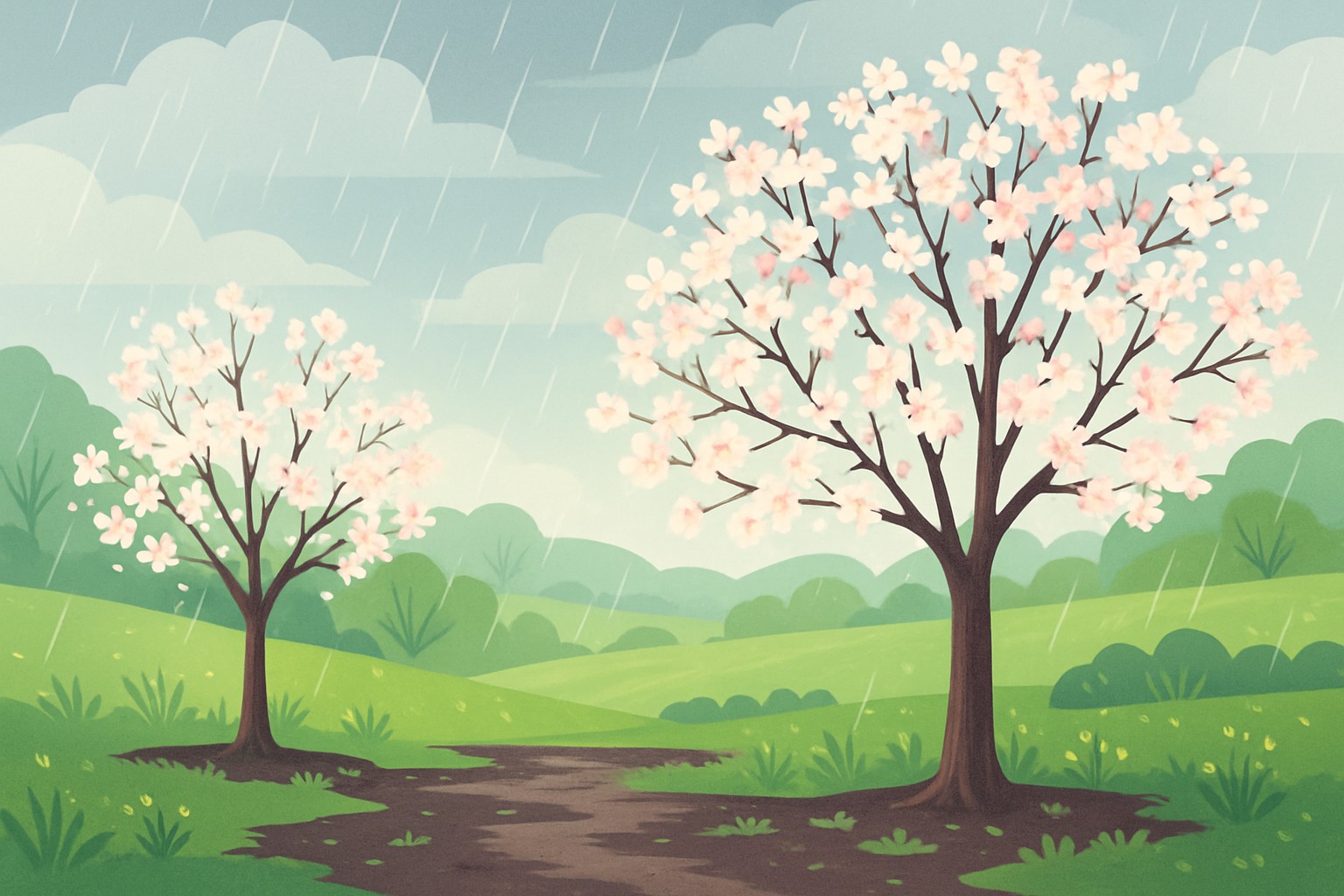
March rain usually plays a pretty vital role as an environmental signal, gently nudging us from winter's chilly grasp into the hopeful freshness of spring. It often shakes up the season’s weather patterns and gives a noticeable boost to ecological activity.
What Usually Calls for Rain in March
March rain usually shows up because of atmospheric patterns that start kicking in as the hemisphere shifts from winter toward spring. You’ve got changing jet streams and rising temperatures with moisture levels ramping up in the air—all teaming up to deliver more frequent and sometimes hefty downpours throughout the month.
- Jet streams that wander around often steer moist air masses over land and boost precipitation
- When ground temperatures climb higher they crank up evaporation and load the atmosphere with extra moisture
- That classic clash between stubborn cold air and growing spring warmth often kicks off frontal systems
- Stronger solar heating stirs up the air making it unstable and likely to throw a few rain showers our way
What You Might Not Realize
The rains in March play a important role in replenishing soil moisture, which is absolutely key for early plant growth and farming. They also help to even out temperature swings since moist air keeps daytime warming and nighttime cooling more balanced. All of this nudges spring weather towards a steadier groove.
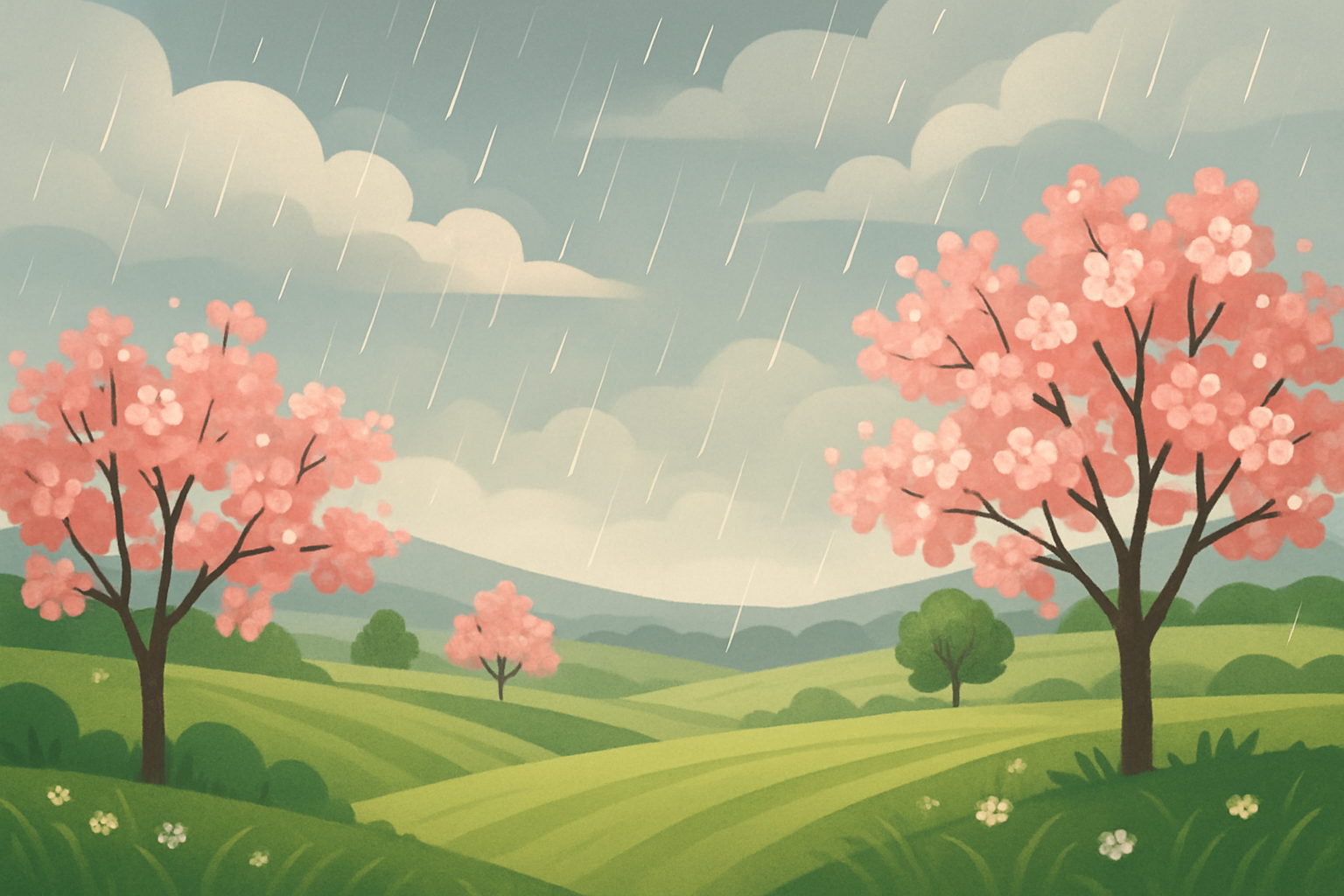
March rain gently nourishing a vibrant spring landscape, showing lush fields and budding plants under overcast skies.
The Weather Science Behind Rain in March (Because Spring Isn’t Just About Sunshine)
In March rain often shows up in various forms shaped by temperature swings and how air masses like to mix and mingle. Weather fronts—those spots where warm and cold air throw a little party—are common this time of year. They bring everything from steady rain to light drizzle or even a quirky mix of different precipitation types.
| Precipitation Type | Formation Process | Likelihood in March | Regional Examples |
|---|---|---|---|
| Rain | Warm, moist air cools and forms droplets, much like nature’s own little spa treatment | Quite common during frontal systems, so do not be surprised if you need your umbrella often | Eastern US, Western Europe |
| Drizzle | Tiny droplets forming in low stratus clouds, almost like a gentle mist that softly kisses the ground | Happens moderately in cool, stable air – those drizzle days can really sneak up on you | UK, Pacific Northwest |
| Snow | Moist air meets ground temperatures near freezing, setting the stage for those classic flakes to fall | Less frequent but still possible early in the month, perfect for someone holding onto winter just a bit longer | Northern US, Canada |
| Sleet | Snow melts then refreezes before reaching the ground, sort of nature’s little ice trick | Usually rare and short-lived, so you might catch it if you blink | Northern Europe, Northern US |
| Freezing Rain | Rain that freezes on contact with cold surfaces, turning roads into skating rinks you definitely didn’t sign up for | Not common but can cause some real headaches when it shows up | Midwest US, parts of Russia |
How March Rainfall Dances Across Different Regions
March rainfall varies a lot around the globe because of differences in climate and geography. In temperate regions you often get steady moderate rain. It’s the kind of drizzle that feels just right without being overwhelming. In Mediterranean climates the seasons usually shift and March tends to have rain tapering off as if nature is taking a breather. Tropical transitional zones can be unpredictable. They might start drying out after their intense wet seasons or still get occasional surprise showers that keep you on your toes.
- You’ll generally see rain picking up just as the snow begins to thaw and temperatures start creeping higher in northern temperate zones
- Places like Australia experience a bit of a twist because rainfall patterns shift from late summer into early autumn. March often turns out to be drier in the southern hemisphere
- Coastal areas soak up more moisture thanks to ocean air masses so they usually get more rain in March compared to their inland cousins
- Mountains mess with the weather by pushing air upwards. Higher elevations tend to get noticeably wetter during March as if the peaks themselves are calling for a raincoat
Ecological and Environmental Effects of March Rain
March rain really steps up to the plate when it comes to supporting ecosystems by quietly replenishing groundwater and surface water—the vital lifelines that help plants and animals shake off the winter blahs and start growing again. It gently coaxes seeds to sprout and gives a much-needed boost to buzzing insects waking from their slumber. It also plays an important role in the breeding rhythms of amphibians and birds.
"March rain really pulls double duty in nature, delivering just the right splash of water needed to keep life ticking along. But of course, when it comes down too hard or doesn’t show up enough, it can stir up trouble like soil erosion. Wrangling these ups and downs together is key for communities aiming to brace themselves and adapt to those classic spring curveballs." – Dr. Elaine Winters, Environmental Scientist
Frequent Misunderstandings About March Rain and Spring Weather That People Often Get Wrong
Many individuals often jump to the conclusion that rain in March is a sure sign the cold is finally packing up or that spring will show up early or that heavy downpours are just around the corner. The timing and amount of rain can vary and those March showers might still sneak in with snow or a chilly snap.
- March rain doesn’t always say goodbye to freezing temperatures. Those chilly days tend to stick around longer than we would like
- More rain isn’t always good for crops because it depends on the timing and the soil type
- Not every March storm arrives forcefully. Many are soft polite drizzles or gentle showers
- Spring weather keeps us on our toes and March patterns don’t always welcome warmer or drier days
Changes in March Rain Patterns Linked to Climate Change We Have Noticed Lately
Climate change is quietly rewriting the script for March rainfall patterns and their intensity across the globe. As the atmosphere warms, it holds more moisture which often sparks heavier rain events. Meanwhile, shifts in jet stream flows and ocean currents create more unpredictability about when and where that rain shows up during March. Some places get hit with intense downpours that increase flood risks. Others find themselves stuck in longer dry spells when steady moisture really matters.
| Trend | Region Affected | Impact Description | Scientific Evidence |
|---|---|---|---|
| Increased precipitation | Northeastern USA, Europe | Rain just keeps showing up more often and harder in March, packing a wetter punch than before | IPCC reports, NOAA precipitation data |
| Greater variability | Mediterranean Basin | March rains have become a bit of a rollercoaster, swinging between wet spells and dry patches unpredictably | Journal of Climate studies |
| Decreased rain duration | Southern Australia | Rainfall tends to come and go quicker now, though when it does, it can really pour | CSIRO climate observations |
| Shifted storm tracks | Northern Hemisphere | Storm timing is getting shuffled around thanks to changes in the jet stream’s usual path | NOAA and NASA atmospheric research |
Practical Implications of March Rain for Agriculture and Water Management
March rain really pulls its weight when shaping decisions around agriculture and water resource management. Farmers lean heavily on rainfall forecasts to decide the best time to plant and gauge how thirsty their crops might get. On the flip side water managers are usually glued to March precipitation data. They juggle reservoir levels and brace for potential flood drama. Getting a solid handle on March rain patterns helps fine-tune irrigation schedules, keep soil health in check and boost drought resilience in farming communities.
- Keeping a close watch on soil moisture after March showers can help nail down the perfect timing for planting and fertilizing
- Tweaking irrigation schedules to line up with March rainfall saves water and gives crops a better shot at handling stress when things get tough
- Flood control strategies usually hinge on expected runoff from March and early spring making those rains a wild card
- Reservoir managers keep a sharp eye on rainfall during this period to squeeze every bit of water storage potential for the summer ahead
- When it comes to drought prediction, March rainfall patterns are a fresh set of clues that help update and sharpen risk assessments
Summary A Fresh Look at What Science Says About March Rain and Spring Weather
Frequently Asked Questions
Why does March rain sometimes still bring cold snaps or snow?
March rain falls during a tricky time when winter is reluctantly loosening its grip but cold air still hangs around. Even as temperatures climb, cold fronts or pulses of polar air can cause a dip, flipping rain into snow or sleet. This weather seesaw is par for the course when winter hands off to spring.
How can farmers best prepare for unpredictable March rainfall?
Farmers should watch soil moisture and weather forecasts closely and hold off on planting if fields feel like mud baths rather than solid ground. Planting cover crops helps shield soil from heavy rains, while irrigation plans need to be nimble to handle dry spells and downpours. Understanding March’s mood swings can ease worries about crops.
Does more March rain always mean a healthier ecosystem?
Not quite. March rain is great for topping up water supplies but too much can cause flooding, wash away nutrients, or slow plant growth like a traffic jam. What counts is balanced rainfall—enough to nourish seeds and wildlife without turning soil or waterways into soggy messes. The ecosystem’s well-being depends on how much rain falls and when it arrives.
How is climate change altering March rain patterns in my region?
Climate change is disrupting March rain patterns, making them less predictable and uneven from place to place. One spot might get heavy downpours increasing flood risks while another faces drier conditions as jet streams shift. Effects vary even within the same country so it’s wise to check local climate reports or agricultural resources to see what’s happening locally.
Can March rain forecasts help predict summer drought conditions?
To some extent, yes. March rainfall helps refill groundwater and reservoirs, which are key for summer water supply. However, long-term droughts depend on more factors. Scientists combine March data with snowpack melt and spring weather to gauge summer water availability but unexpected late rains can still throw forecasts off.


